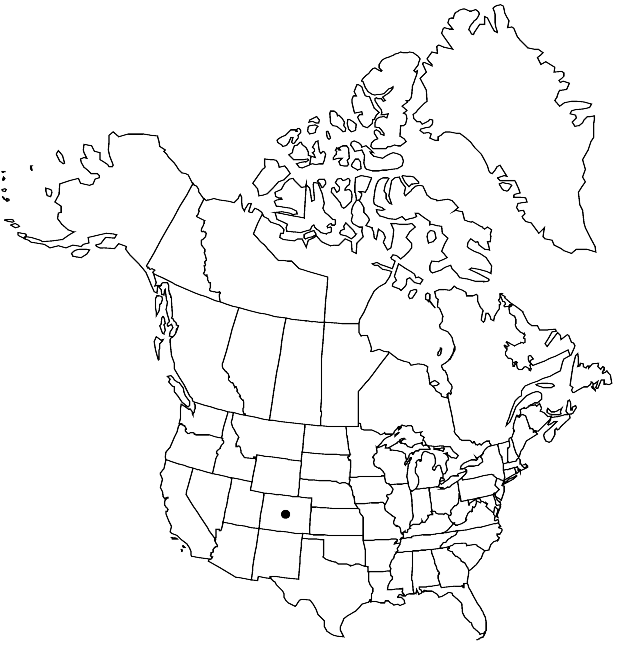familyBrassicaceae
genusPhysaria
speciesPhysaria floribunda
subspeciesPhysaria floribunda subsp. osterhoutii
Physaria floribunda subsp. osterhoutii
Novon 17: 379. 2007.
Common names: Osterhout’s twinpod
Basionym: Physaria osterhoutii Payson Ann. Missouri Bot. Gard. 5: 146. 1918
Synonyms: Physaria floribunda var. osterhoutii (Payson) Rollins
Revision as of 10:56, 30 July 2020 by imported>Volume Importer
Racemes congested (4–8 cm). Fruiting pedicels 10–15 mm. Fruit valves usually not inflated, coriaceous; trichomes slightly spreading.
Phenology: Flowering May–Jun.
Habitat: Limey ridges, chiprock and clay knolls, shale hillsides, gravelly clay bluffs
Elevation: 2200-2500 m
Discussion
Of conservation concern.
Selected References
None.
Lower Taxa
None.
No values specified."not" is not a number. "elongated" is not a number."thick" is not a number."dm" is not declared as a valid unit of measurement for this property.
... more about "Physaria floribunda subsp. osterhoutii"
hypogynous +
dithecal +
dehiscing +
obtuse +
petiolate +
rosulate +
opposite +
absent +
auriculate +
spatulate;linear-oblanceolate +
absent +
branched +
pubescent +
woody +
well-developed +
distinct +
absent +
Osterhout’s twinpod +
accumbent +
3[2]-fid +
absent +
Colo. +
absent +
median +
dilated +
actinomorphic +
bisexual +
inflated +
coriaceous +
dehiscent +
dehiscent +
distinct +
absent +
racemose +
pungent +
watery +
absent +
connivent +
spreading +
decurrent +
toothed;subentire;pinnatifid;dentate +
absent +
1-seeded +
obscure +
confluent +
receptacular +
variable +
simple +
eseptate +
parietal +
apical +
decussate +
absent +
hypogynous +
alternate +
absent +
rudimentary +
spatulate +
2-carpellate +
4-11-colpate +
Novon +
2007 +
loose;congested +
congested +
divaricate +
sigmoid +
slender +
coiled +
accumbent +
conduplicate +
incumbent +
tiny +
indistinct +
linear-oblong +
constricted +
slender +
biseriate +
flattened +
saccate +
distinct +
lateral +
linear-oblong +
absent +
reduced +
longitudinal +
tetradynamous +
equal +
decumbent +
erect +
lateral +
several +
absent +
persistent +
distinct +
absent +
obsolete +
Physaria floribunda subsp. osterhoutii +
Physaria floribunda +
subspecies +
several-rayed +
mixed +
stellate +
spreading +
stellate-scalelike +
dehiscing +
anastomosing +
not scapose +
perennial +
pubescent +
eglandular +
subshrub +
submerged +
